We might have not observed the beauty of Gujarat, but it does have some great places if you are planning a visit to this state. From Rann of Kutch to Somnath Temple, this state has some of the best locales to visit and have been experienced by many.
For those who are thinking to give Gujarat a visit, these are a must to be noted on your list.
Rani Ki Vav, Patan
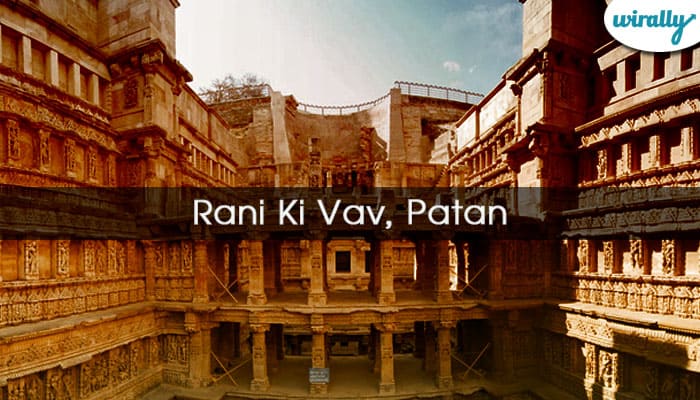
Rani ki Vav- as the name says this step well was built by Queen (Rani) of Bhimdeva, Udayamanti. Constructed in the 11th century to preserve ground water, Rani ki Vav came into limelight in 1972 when the area was fully earthed. The main highlight of the stepwell is that its walls that are profusely ornamented with figurative motifs and showcases images of various god and goddesses and their consorts from the Hindu Pantheon. The central part of each storey contains the primary sculpture. Winter is the best season to visit Rani ki Vav as you can enjoy the light shows, cultural events and exhibition at the Rani ki Vav Festival.
Gir National Park, Junagadh
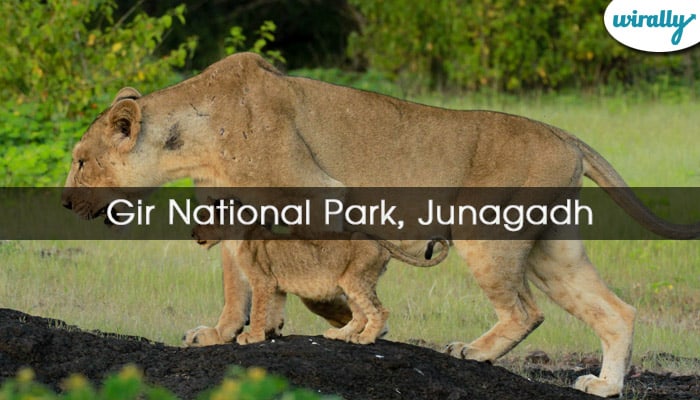
One of the largest domains of the ferocious Asiatic animals, Gir National Park is a sparkling diamond in the jewels of Gujarat. Along with lions, this dry deciduous forest is home to more than 300 avian species like great horned own, crested serpent eagle and other members of the cat family like leopards. Going by the records of the forest department, there are 29 species of reptiles, 33 species of mammals, 93 species of invertebrates, 96 trees, and 448 flowering plants. Also, the national park is notable for its silk cotton trees; whose bright orange flowers add dashes of color to this dusty brown landscape. Best time to go for jeep safari at Gir National Park is between March and May.
Dwarkadhish Temple
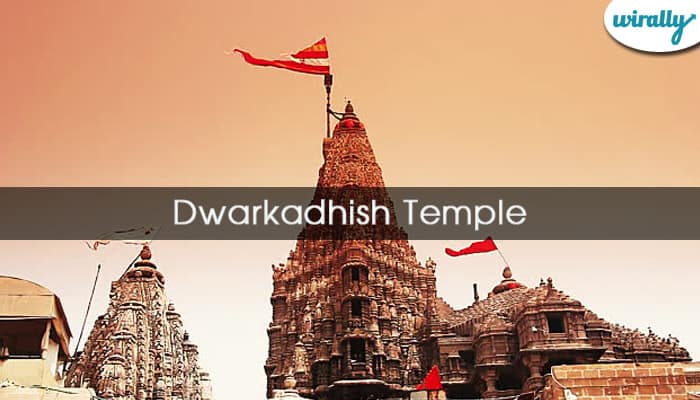
One of the four Dhams (divine abodes of India) and Sapata Turis (seven sacred cities), Dwarkadeesh Jagat Mandir doesn’t need any introduction. The word ‘Dwarka; is made of two words- ‘dwara’ meaning road, and ‘ka’ implying eternal significance. Going by the mythological records, Dwarka was the kingdom of Lord Krishna, and he stayed there for quite an extended period. This five storey temple stands on 72 pillars, which according to the science of archeo-astronomy, is some immense significance. The sandstone plinth and walls of the temples are embellished with panels depicting dancers, elephants, musicians and celestial beings. Along with Jagat Mandir, you can also visit the nearby temples like Bet Dwarka, Okha, and shrines dedicated to Rukmini (Lord Krishna’s Wife), Mirabai, Narsinh Mehta and Shank Narayan.
White Desert – Great Rann of Kutch
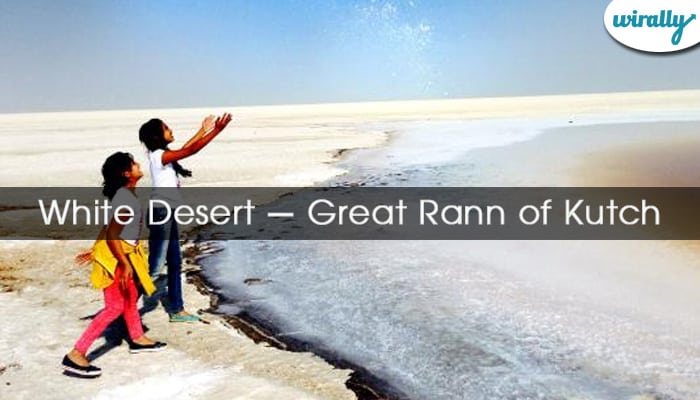
A must visit on a trip to Gujarat, Great Rann of Kutch is reputed to be the world’s largest white salt desert. Spanning over an area of 7505 sq km in the western fringes of Gujarat, the desert looks like a diamond under the scorching sun and appears like an eerie under the bluish glow during the night hours. To witness the best of the white desert, one should visit there during the Rann Utsav, which happens between November and March. On a visit to the white desert, make a point to enjoy the camel safari. Many villages nearby Kutch like Hodko, Nirona, Mandvi and Bhujodi, has hotels and resorts where you can book a stay when on a trip to Kutch. Apart from the awhite desert, you can al visit Narayan Sarovar, Koteshwar temple and Bachuchara temple
Somnath Temple
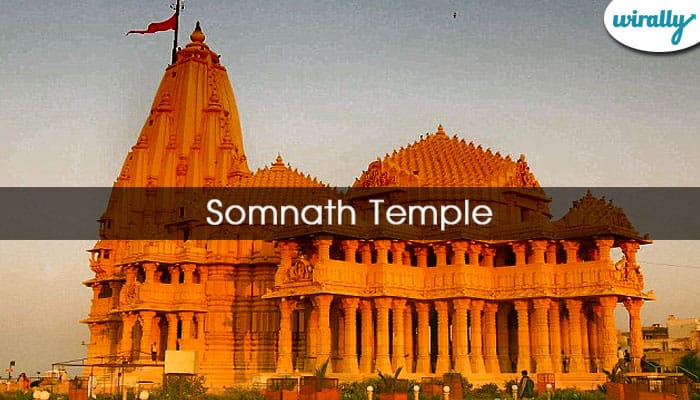
A primary shrine amongst the 12 Jyotirlingas of Lord Shiva, Somnath temple is located in the small town of Gujarat’s Junagarh district. One of the most expensive aartis, costing approximately 15 lakhs is carried out here. The shivling at the temple is believed to be ‘swayambhu’ or self-born, manifested in the temple. Locals call this temple as ‘shrine eternal’ because it has withstood the test of time; it was destroyed six times and every time it was rebuilt. The current structure of the temple, seventh reconstruction, is a magnificent edifice built in the Chalukya style of architecture by the master masons of Gujarat, known as Sompuras. You can also visit the beach, and the museum, close to the temple, which exhibits 1638 pieces from 7th to 15th century
Polo Monument and Vijaynagar Forest
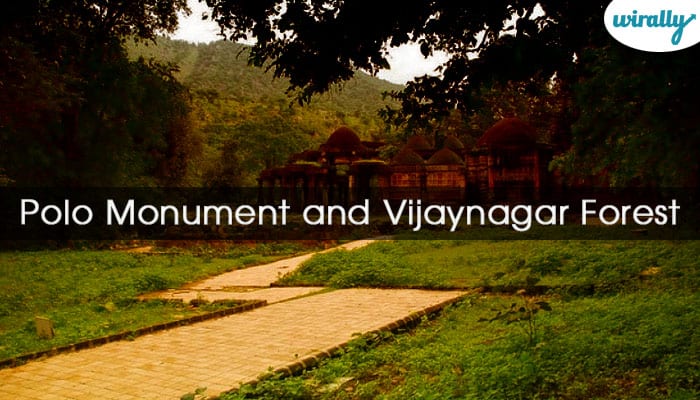
The temples of Polo, located near Vijaynagar, were built between 10th and 15th centuries under the Gurjara-Pratiharas and later the Rathores as a hiding place from enemies, citizens, angry wives, and even from the sun. While there are number of medieval temples in the polo region of this period, the most notable ones are Sarneshwar temple (still in use), Lakha Dera Jain temple and Shiv Shakti Mandir. Structure and design of the temples reveal Islamic traces in the use of domes and lattice screens; it also follows the layout of Traditional Hindu temples. To reach the temples, you can take a bus or private taxi from Ahmedabad, which is hardly 160 kilometers away. Jeeps are also available from Idar, a town in Sabarkantha, which is 56 km from Vijaynagar. Jeeps would take you till the Polo campsite only, thereupon you will have to trek in the forest to explore the temple. There is only one homestay available at the Vijaynagar.
Marine National Park, Jamnagar
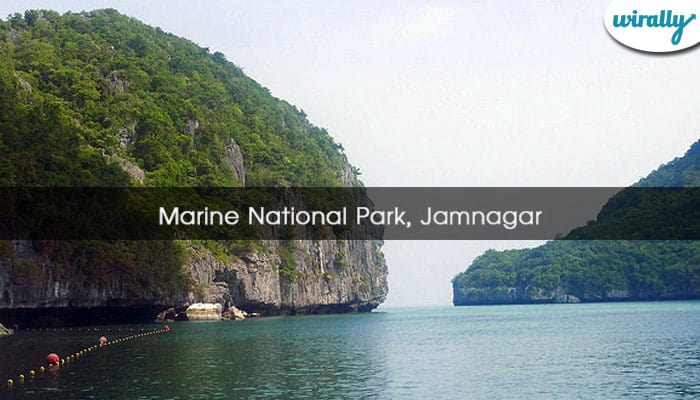
Western edges of Gujarat are flanked by 1600 km long coastline, which is perhaps the largest in India. In this long coastline, there is a tiny reserve called Marine National Park, which is one of its kinds in India, on the Gulf of Kutch. It’s the only place in India where one can see the coral reefs of different shapes and sizes without diving in the water. Some of the finest marine species that can be found in the national park are sponges, starfishes, sea cucumbers, puffer fishes, sea horses, huge green sea turtles, etc. Also, you can see many sea birds like cranes, flamingos, sea gulls, etc. To reach the marine national park, you will have to hire a boat from the Bedi Port or Sikka Port. The local boat takes one and a half hours to reach the main park. Dreamy beaches, picturesque coastline, clear water, and a dash of history-all can be found and experienced on a trip to Marine National Park.
Saputara
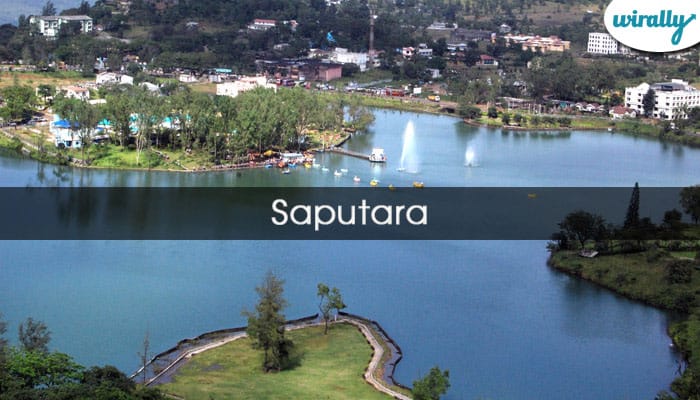
If you think Gujarat is all about forts, palaces, temples and jungles, think again, as this fine state also has a hill station within its vicinity, Saputara. Tucked in the Sahyadri hills amidst the dang forest, Sapatura is an uber cool retreat that offers people of Gujarat respite from its humid weather. Honey bees Center, Rose Garden, Lake Garden, Step Garden, Gira Waterfalls, Mahal Forest, Gandhi Shikhar and Sunrise Point are most visited tourist attractions in Sapatura.
Dholavira
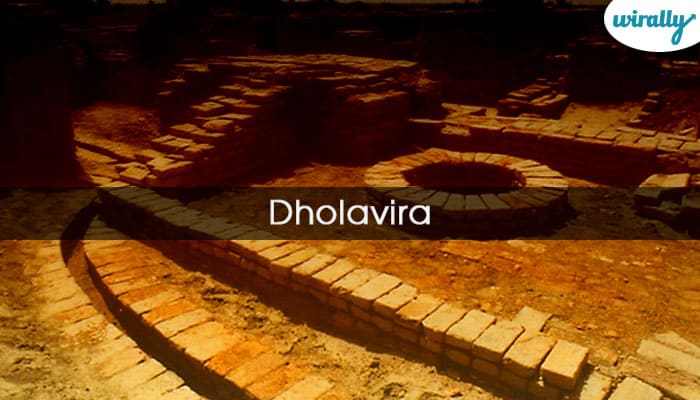
250 km from the Bhuj district of Gujarat nestles an ancient town, Dholavira; that throws the light on the Harappan culture and its magnificent civilization. Second largest in India and fifth largest in the Indian sub-continent, this Harappan site the only place that marks the presence of Harappan culture from 2900 BC to 1500 BC. On a trip to Dolavira, you walk can pass through the sun-dried buildings, 5,000-year-old stepwell, ancient reservoirs. To reach Dolavira, you will have to drive for six kilometers from Ahmedabad. Accommodation options are very limited in Dolavira so; you can stay in Ahmedabad or head to Bhuj for the great Rann of Kutch.
Lothal
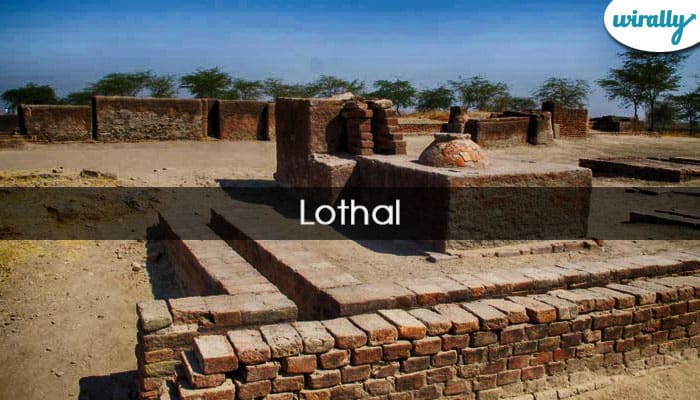
Somewhere like Dholavira, Lothal is also a significant site of the Indus Valley civilization excavated in India. Here, you can see a tank, which is believed to be a dry dockyard and is connected by the channel to the old course of the Sabarmati River. To know the place better you can also visit the museum, located at the entrance of the hotel, which showcases 5089 products unearthed from the evacuation like terracotta ornaments, shell and ivory objects, replicas of seal and sealings, tools and potteries yielded from excavations, copper and bronze objects animal and human figurines, weights, etc. To reach Lothal, you can hire a taxi from Ahmedabad and go for a long day trip or travel by train till Gandhigram and thereupon take a bus.
Palitana Jain Temple, Bhavnagar
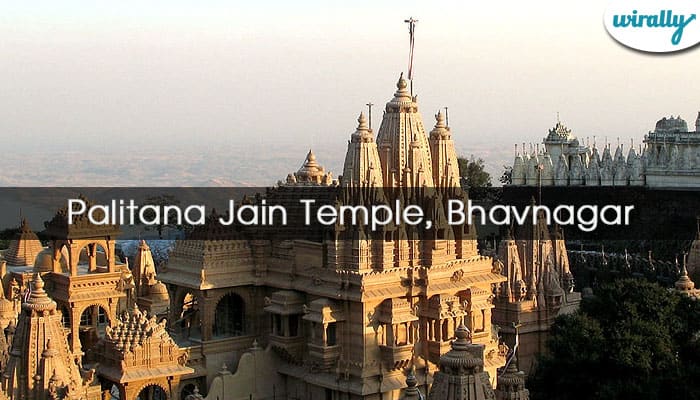
Located atop the Shetrunjai Hill, Palitana temple is one of the most sacred Jain temples in India and is known for its 3000 brilliantly carved temple. It is believed that the first Jain Tirthankara, Adinath, is visited this hill while his chief disciple Pundarika attained enlightenment here. According to the records, there are approximately 108 large temples and 872 small shrines with about 7000 images total that have been built over 900 years from the 11th century by the Jain community. To reach the temple, one will have to climb 3800 steps. For the elder, palanquin (palki) service are easily available. The panoramic view of Palitana unfolded itself as one progresses along to the temple. From the top of the temple, you can see the panoramic view of the Gulf of Cambay and countryside.
Note: Devotees usually start their climb early in the morning and make their descent by evening as staying at night is not permitted.
Sun Temple, Modhera
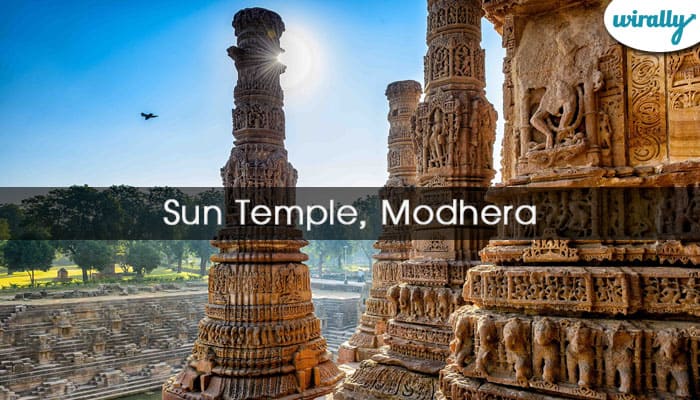
Built in 1027 AD, Sun temple is one of the surviving Indian shrines dedicated to God Sun and stands as an epitome of the exquisite Hindu temple of Solanki dynasty. The temple is divided into three parts, which are perfectly aligned from east to west, in accordance with the deity passage of the sun. Inside the temple complex, you can see a suryakand or stepwell, prayer hall (also known as Sabhamandapa) supported on 52 pillars and another room (Gudhamandara) that leads to inner sanctum called Garbhagrah. The temple is a sight to behold during the Modhera Dance Festival. Sun temple is located in the Mehsana district of Gujarat, and one can reach by car or bus ride from Ahmedabad.
Akshardham Temple, Gandhinagar
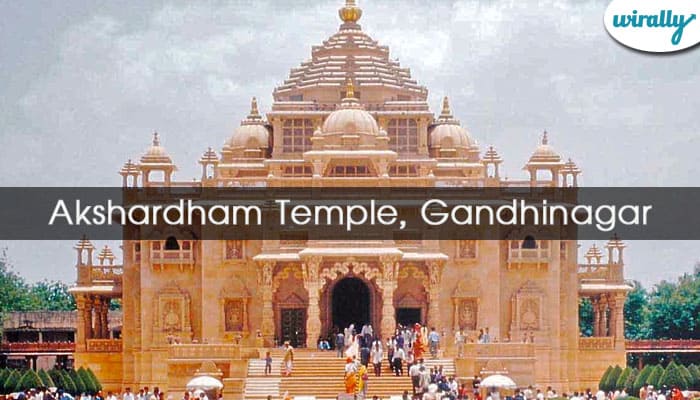
Established in 1992, Akshardham temple is sacred to Lord Swaminarayan, who belongs to Vaishnav tradition and believes that salvation can be reached by the total devotion of supreme God by exercising righteousness, knowledge and detachment. Set up in an area of over 23 acres, the temple complex serves as a place for education and entertainment. The highlight of the temple is its architecture built of 6000 tons of pink sandstone and not event cement or steel has been used in its construction. The main hall of the temple enshrines 7 feet tall idol of Lord Swaminarayan. Further flanking the idol are the statue of his successors. A treat to the eyes of architecture lover, Akshardham is one of the magnificent architectural heritage of Gujarat.
Shri Arasuri Ambaji Mata Temple, Ambaji, Banaskantha
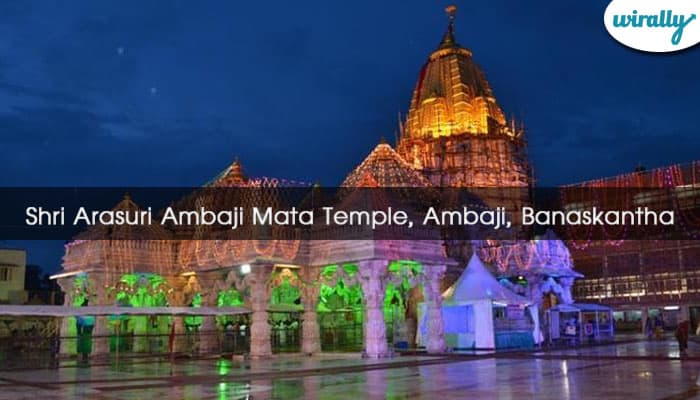
One of the Shaktipeetha and a prominent religious site in Gujarat, the Ambaji temple is located on the border of Gujarat at Rajasthan. Locals say that when Lord Shiva was carrying the burnt body of goddess Sati, her heart fell at the same place where the temple currently stands. At the Ambaji temple, Visayantra is worshiped, not the idol of the goddess. The temple looks its best during Bhadrapad Purnima, and Navratri festival as this is when the temple structure is decorated with lights and flower.
Pols of Ahmedabad
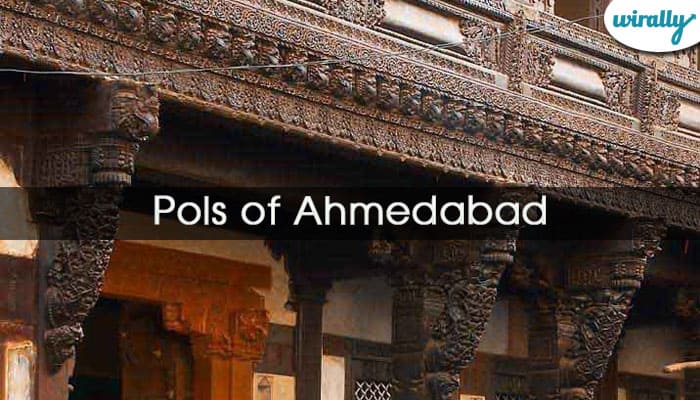
Finest creations or should I say the major tourists attractions in Gujarat are not only the efforts of years year rulers but also there is a little bit contribution of the citizenry as well. Pols are distinct residential areas that are unique only to Gujarat, and one can find their significant numbers in Ahmedabad. There are nearly 174 pols in Ahmedabad, each featuring finest lovely wooden windows, brackets, magical balconies, chabutras, khidkis, and chowks. Earlier pols were the preferred residence across the different sections of Gujarat society for the feeling of society and identity they evoke. Time has bestowed beauty to pol architecture of Gujarat, making them an ornament of world building.
Wild Ass Sanctuary, Little Rann of Kutch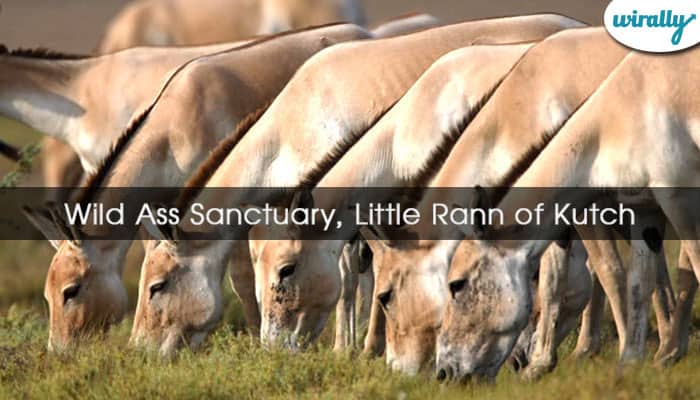
Taking about the wildlife tourism places, a vivid image of lush jungle with a countless number of trees and plants clicks our mind, but that’s not it. Certain wildlife sanctuaries can be found in the harsh deserts and best example of the same is is the Wild Ass Sanctuary. Located in Little Run of Kutch over an area of 5000 square kilometers, the Wild Ass Sanctuary in Kutch is the only home to wild ass in India. Other than the wild ass, the sanctuary is home to 32 other type of mammals including chinkara(Indian gazelle), Jackals, Caracals, Nilgais (the largest antelope of Asia), Indian Wolves, Blackbucks, Striped Hyenas, etc. There are around 3000 wild asses in the sanctuary and can be best seen in and around October and November. Tourists who are visiting the sanctuary can book their stay in the resorts and hotels nearby the sanctuary. Day safari from Dhrandadhra, Zainabad and Dasada are provided by the resort. Wild Ass Sanctuary is no less than an empyrean for the tourists, needless to say- of all kinds!
Velavadar Blackbuck National Park, Velavadar, Bhavnagar
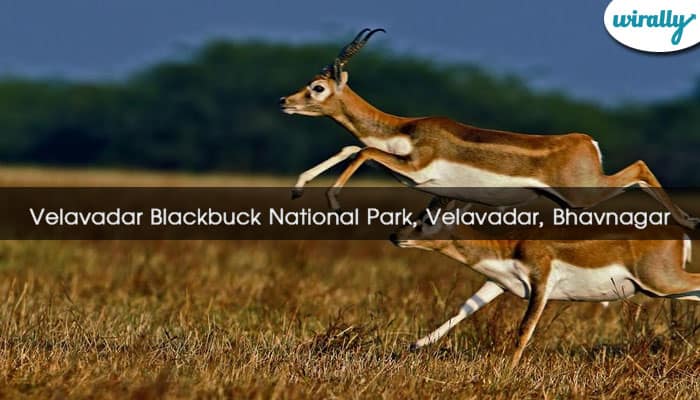
Travelers who love the concept of safari in African savannah but somehow not able to manage the trip then Velavadar Blackbuck National Park is one of the places that can quench your wanderlust. The national park is situated in Bhal region (approximately 150 km from Ahmedabad) and as the name suggest it is one of the largest roosting grounds of blackbucks. Along with the blackbucks, here you can spot birds of every shapes and size. Walking is the only way to explore the national park, and it indeed sounds exciting here.
Adalaj Vav / Adalaj Stepwell, Ahmedabad
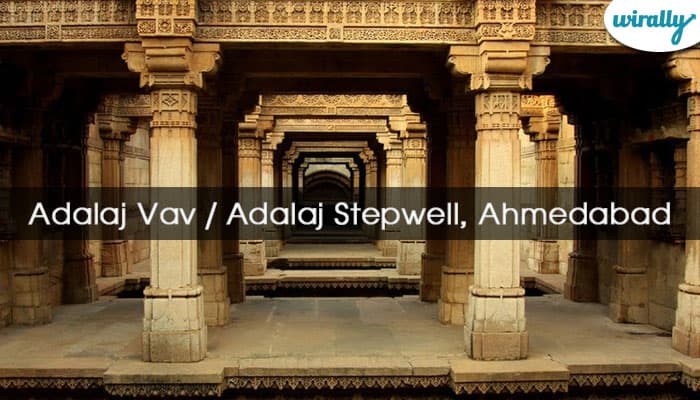
Originally built as a stepwell in 1555 AD in the outskirts of Ahmedabad, Adalaj Vav is a finest example of Indo-Islamic architecture as here one can see a fusion of Hindu craftsmanship and the geometric pattern of Islamic architecture. What makes this stepwell the most beautiful amongst other is its series of platforms and galleries built on the side of the stepwell. Flight of the steps leading to circular tank, entrance pavilion at the ground level and well at the lowest level are the three distinctive feature of Adalaj stepwell. All thanks to its exquisite carving and embellishment, Adalaj is a clear winner of being the perfect landmark in Gujarat.
Great Indian Bustard Sanctuary, Kutch

Even if I go by the law of probability, there will be the best chances of spotting great Indian bustard, one of the heaviest flying birds, at the extensive grassland of Kutch. The sanctuary is spread over an area of 2 sq km and is the second largest home ground of Indian Bustard, the largest being Desert National Park in the neighboring state of Rajasthan. Other than the Great Indian Bustard, birds that are found flying around the sanctuary are McQueen’s Bustard, Lesser Florican, Stoliczkas, Bushchats, Merlins. Varied vegetation, semi-arid grasslands, and marshy swamps make Kutch Bustard Sanctuary an ideal home for Great Indian Bustard. Best times to visit Kutch Great Indian Bustard Sanctuary are between August and March.
From heritage places to waterfalls to spiritual centers, Gujarat’s vibrant outlook and cultural diversity attract millions of visitors throughout the year. On your trip to Gujarat make a point to include all these places in your travel itinerary to get one of the best travel experiences of your life. If you think, I have missed any attraction that is worth exploring in Gujarat; please feel free to suggest us in the comment box below.
Vijay Vilas Palace , Mandvi
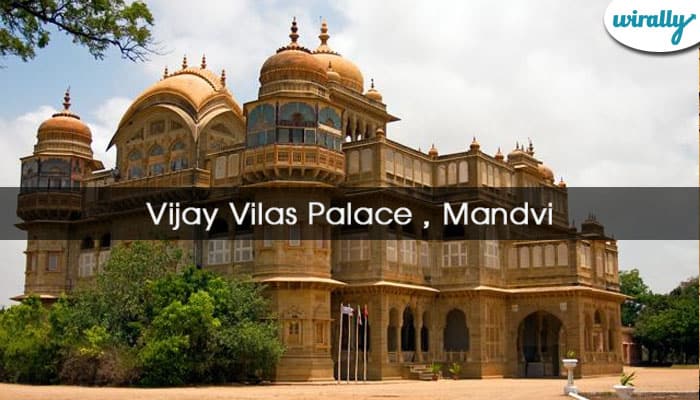
When it comes to shooting the films, Vijay Vilas Palace is a favorite haunt of the directors. This 20th-century summer palace of Yuvraj Shri Vijayaraji is an impressive Indo-Edwardian and is located quite close to the beach. The place is made of red sandstones by Mistris and Suthars of Kutch, and it features every element of Rajput architecture and bears a striking resemblance to palaces of Orchha and Datia. A portion of the palace is now converted into a resort, offering accommodation options with an ethnic decor and is replete with modern amenities. Inlaid tile work, distinctive stone carving, manicured garden, intricate jail work, great water streams, and murals are the highlights of the palace.
Source














